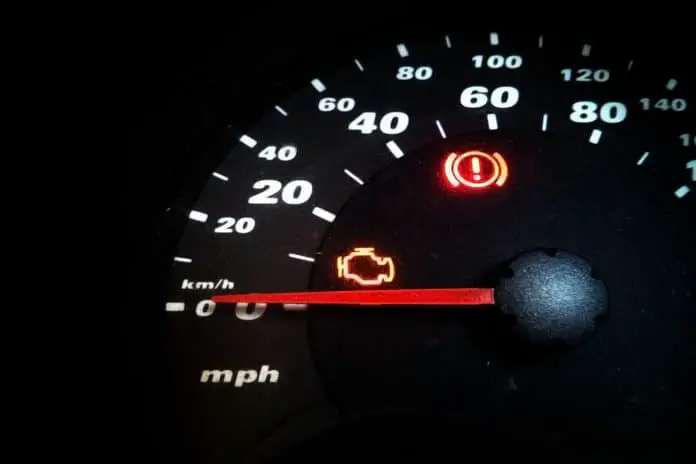
A yellow or orange light in the dashboard signifying a “Check Engine” warning is quite annoying, if not alarming, even to seasoned motorists. How to identify what’s wrong and reset check engine light without disconnecting the battery is something that all car owners should learn how to do. Learn how to do it in this article.
How to turn off the Check Engine light without disengaging the battery? You can turn off the Check Engine light with the use of a code scan tool or a car code reader, and you don’t have to disconnect the battery to do it.
The old way of resetting the Check Engine light is to disconnect the battery. However, The light can’t be reset and codes can’t be erased using this method of disconnecting the battery on newer models of cars.
Trouble codes on these cars are stored in the ROM of a car’s engine control module. Only a code reader or scan tool can turn off or reset the Check Engine light and erase or clear the trouble codes.
A yellow or orange light on the dashboard that says “Check Engine” could be a warning that something is wrong with the emission control system or the catalytic converter of your car is damaged. But it could also mean a very minor issue such as a gas cap that has become loose. Other reasons why you are seeing that light would be a deteriorating ignition coil or an oxygen sensor that is not working.
A Short History Of The Origin Of The Check Engine Light
Before 1996, every car manufacturer has their distinctive engine diagnostic system, mainly in compliance with the pollution-control stipulation of the Environmental Protection Agency.
Beginning with the car models of 1996, car manufacturers agreed to come up with a standard system called OBD-II (On-board diagnostic) which designated a uniform list of DTCs or diagnostic trouble codes. It has also been agreed that all cars be equipped with a common connector for accessing the data. The OBD-II port is normally located in an accessible location which is underneath the steering column.
The OBD-II is the car’s reporting and self-diagnostic network that gives you or a car mechanic access to the condition of the different subsystems of your car.
The codes generated by the car’s computer can be deciphered by a code reader which is quite inexpensive and available in almost all auto parts shops. The code reader is plugged into the OBD-11 port and you can search for the meaning of the code on websites such as Engine Light Help.
The code reader can also turn off the Check Engine light, but, take note, it cannot correct the problem which could come back at a later date.
But, How Would You Know What The Problem Is?
The official name of the Check Engine light is Malfunction Indicator Lamp. The light is a warning from your car’s computer that there is something wrong. The computer in your car generates codes. Having these codes scanned and deciphered will help you determine the cause of that orange light on your dashboard.
Some drivers commit the mistake of thinking that the “Service Required” light on the dashboard is the Check Engine light. These two alert lights are not one and the same, nor are they related. The “Service Required” light is an indicator that the car is due for a routine care such as an oil change. It does not indicate a problem like the Check engine light.
Common Problems Indicated By A Lit Check Engine
If the Check Engine light starts flashing, it could mean a rather serious trouble such as an engine misfire that can overheat the catalytic converter fast, and escalate into a fire.These emission control devices work at high temperature to reduce emissions, but can be a fire hazard if defective. That light should not be ignored. Bring the car to an auto repair shop at the earliest convenient time and have the problem corrected.
If the light is steady, the problem may not be too serious or an emergency. It could be only because of a loose gas cap. A loosened gas cap transmits an error message to the computer which is interpreted as a seepage in the vapor recovery system. A component of the emission control system.
If it is only a loose gas cap, all you need to do is tighten the cap. The light won’t go off immediately, but eventually it will. However, it is a wise and sensible decision to have your car checked.
Some drivers ignore the Check Engine warning for fear of a costly repair. They try to eke out as much mileage as they can before having the engine checked. But, sooner or later, they will have to visit an auto repair shop to have the Check Engine light reset and turned off otherwise their car won’t pass the required vehicle emission inspection of their state.
If a car’s Check Engine light is lit, it could be an indicator that the engine is consuming a large amount of fuel or is discharging too many pollutants. Both cases are detrimental to a car’s gas mileage, and to the chances of getting an emission inspection clearance.
When the Check Engine warning is on, it is important to address the issues pinpointed by the light. To ignore them could bring bigger and more expensive problems in the future.
Every now and then, the Check Engine light lits up for no apparent reason or even when there’s nothing wrong with your car. The problem could be temporary, caused by factors such as a change in humidity. If such is the case, the light will turn off on its own shortly.
Code Scan Tool Vs. Car Code Reader
If you noticed, I have used code scan tool and car code reader interchangeably. But, in truth, these two devices are not the same. They both perform a basic code reading function as well as a resetting or clearing operation, but the similarity stops there.
A code scan tool has more advanced features such as a more cutting-edge data reading and playback element, diagnostic methods, expanded database, and oftentimes, a built-in testing tool. It is also more expensive than a code reader.
If all you want is to be able to read the codes, clear them and reset the Check Engine light, a code reader will do quite well. It is not only easy to use, but it is also inexpensive.
How To Turn Off The Offending “Check Engine” Light
The safest and most straightforward way to reset the “Check Engine” light is with the use of a code reader or code scan tool which you can buy from any store of vehicle aftermarket products.
This method will apply only to car models manufactured starting 1996.
When you see that irritating red or orange light comes on, here’s what you should do:
Step 1 – Plug in the code scan tool or car code reader to the car’s OBD-II (on-board diagnostic) port located under the steering column of your car. Switch on the ignition and turn off all electronic accessories.
Step 2 – Depress the “Read” toggle on the code reader or scan tool to see the engine’s trouble codes. Copy the code or codes sequentially. This can be used as a reference in the future or when there is a needed repair to be performed.
Step 3 – Depress the “Erase” or “Clear” toggle on the code reader or scan tool to clear the trouble codes. When you clear the trouble codes, the Check Engine light will automatically switch off or be reset.
Conclusion
There definitely is a way on how to reset Check Engine light without disconnecting the battery. It can be easily and safely done using either a car code reader or a code scan tool. However, this method of turning off the light will only apply to car models from 1996. For older car models, the method that will work is to disengage the battery.
A gentle reminder: Don’t ignore a lit Check Engine light. Ignoring it could give you grief in the form of engine troubles that could be very expensive to repair.





